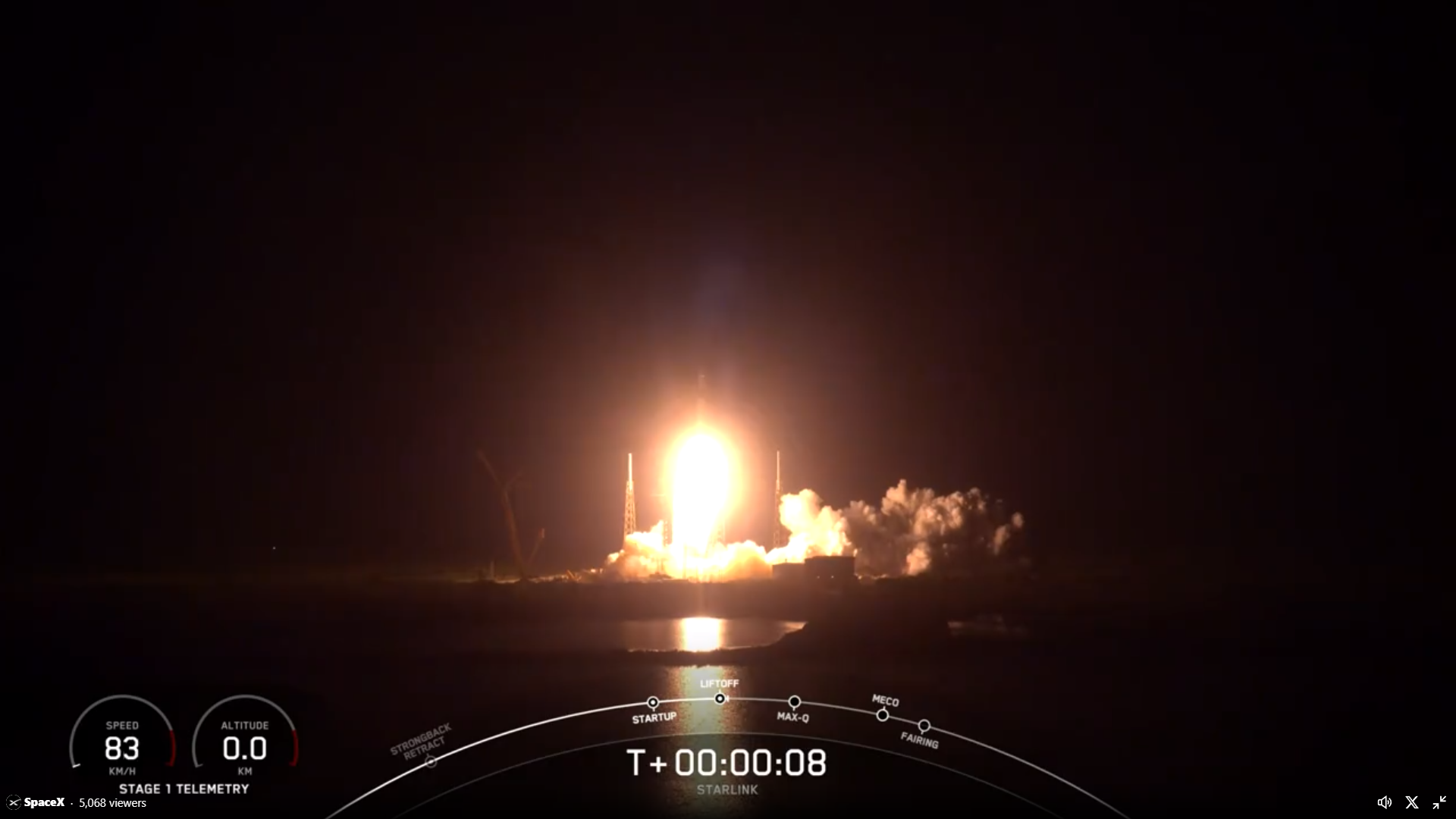
After moving deep into an expansive “launch window” of T-0 points, SpaceX successfully executed its eighth Falcon 9 mission of November in the small hours of Wednesday morning, as a 15-times-used booster roared uphill from storied Space Launch Complex (SLC)-40 at Cape Canaveral Space Force Station, Fla. Last night’s rousing rise to space marked the 86th orbital flight by a Falcon-class vehicle—a figure which now includes 82 Falcon 9 missions and four outings by the triple-barreled Falcon Heavy—as the Hawthorne, Calif.-headquartered organization heads squarely for its first ten-launch month and conceivably will draw close to achieving its first hundred-launch year.
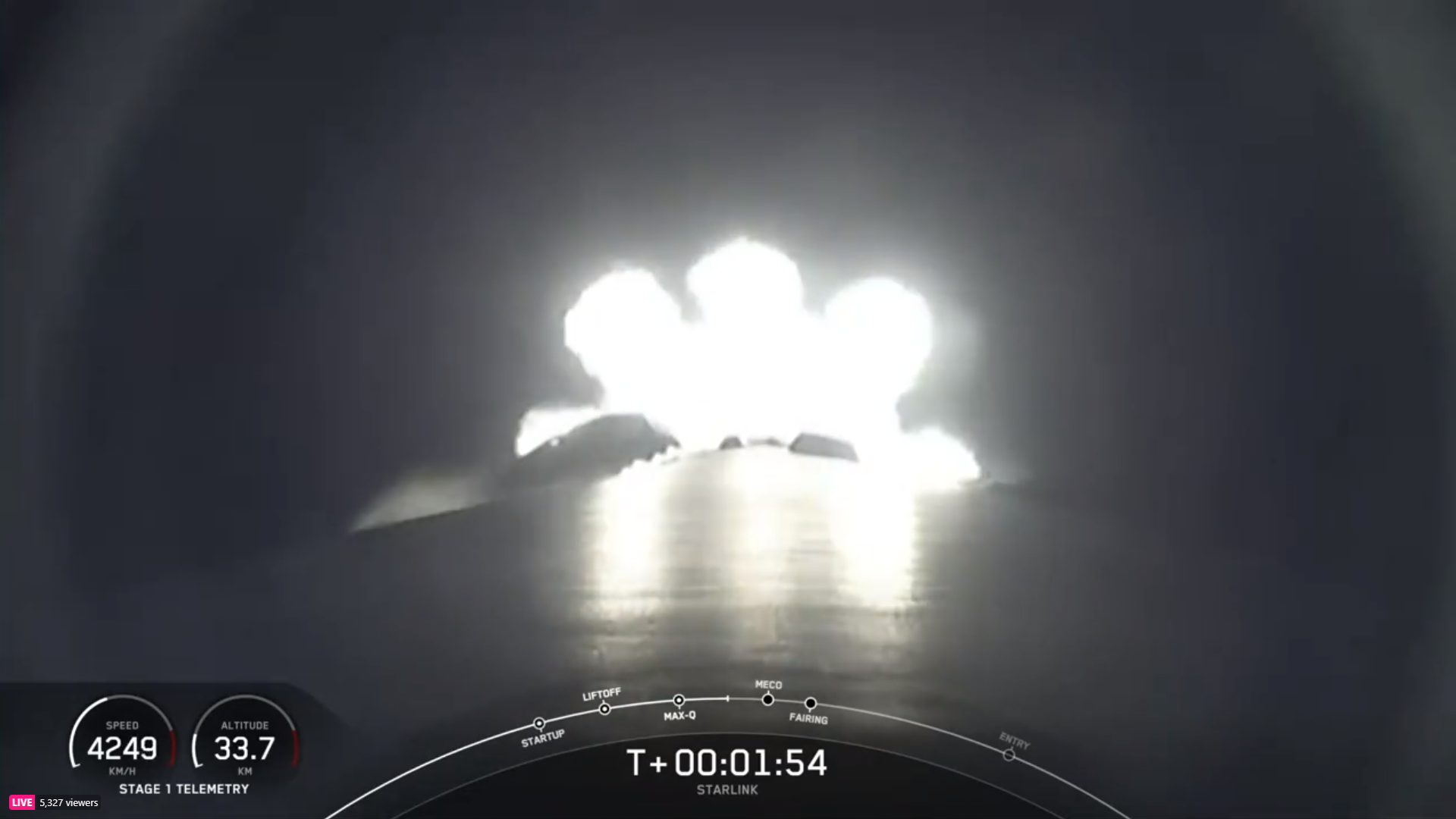
Benefiting from a raft of T-0 opportunities between 11:01 p.m. EST Tuesday and 2:59 a.m. EST Wednesday, weather briefings from the 45th Weather Squadron at Patrick Space Force Base attached the greatest favorability to the early part of the window, with a 90-percent probability of good conditions, deteriorating to as low as 75-percent closer to its end. “A small chance for Atlantic showers will continue into Tuesday,” the 45th noted in a Monday update, “before the approaching system brings a cold front into the Florida Panhandle Tuesday evening.
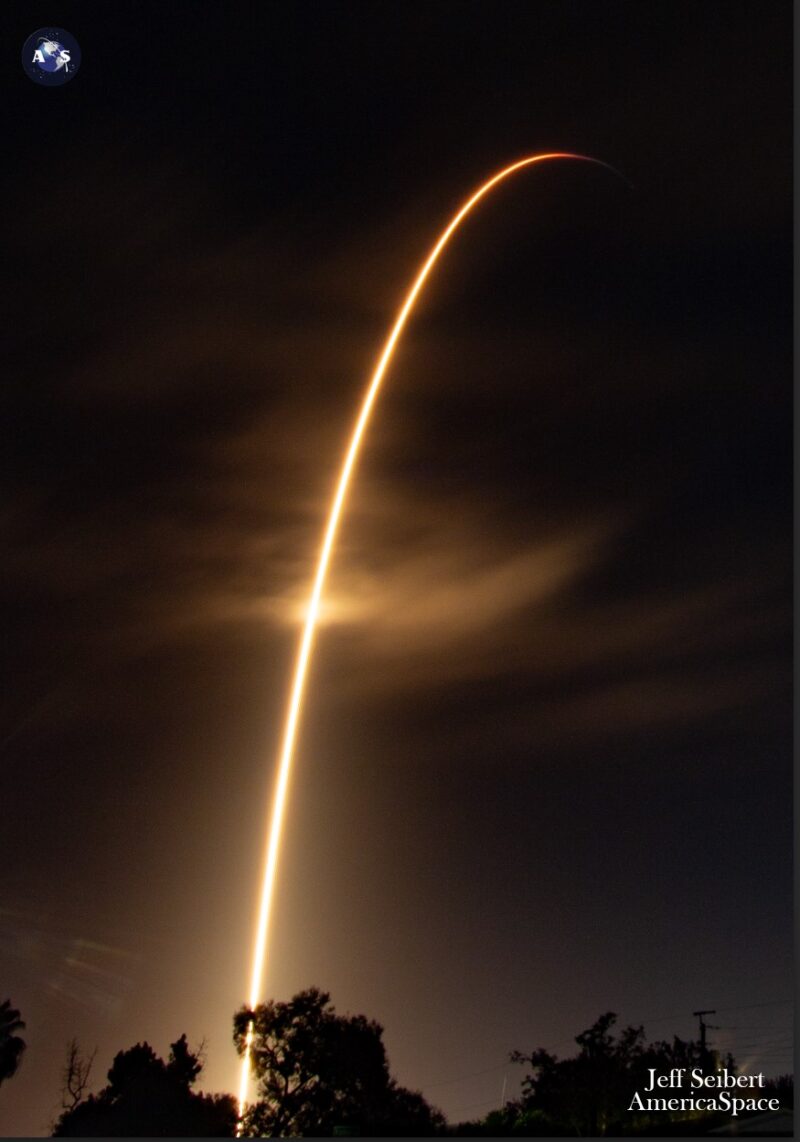
Photo Credit: Jeff Seibert/AmericaSpace
“A lack of significant moisture return will limit the shower potential ahead of the front, however mid- and upper-level clouds will begin overspreading the area through the late evening and overnight hours on Tuesday,” the 45th continued. “For the primary launch window, the initial cloud cover is expected to be too high and cold for concern at window open, but chances will increase for warmer clouds to move in further into the window, posing an increasing Thick Cloud Layers concern.”
In readiness for the launch—the eighth Falcon 9 to fly in November’s first three weeks—the Autonomous Spaceport Drone Ship (ASDS), “A Shortfall of Gravitas”, put to sea out of Port Canaveral on Saturday, bound for a recovery position about 390 miles (630 kilometers) offshore in the Atlantic Ocean. It also marked B1067’s 15th landing on a drone ship and her tenth on the deck of ASOG.
Having entered the Falcon 9 fleet in June 2021, this booster went on to deliver eight astronauts from the United States, Germany and Italy to the International Space Station (ISS) on Crew-3 in November 2021 and Crew-4 in April 2022, followed by the CRS-25 Cargo Dragon to the sprawling orbital outpost the following summer. Added to that list, B1067 lofted a geostationary communications satellite for Turkey—which helped set a new record (now broken) between pairs of Falcon 9 launches at less than 16 hours—and a pair of O3b mPOWER broadband satellites.
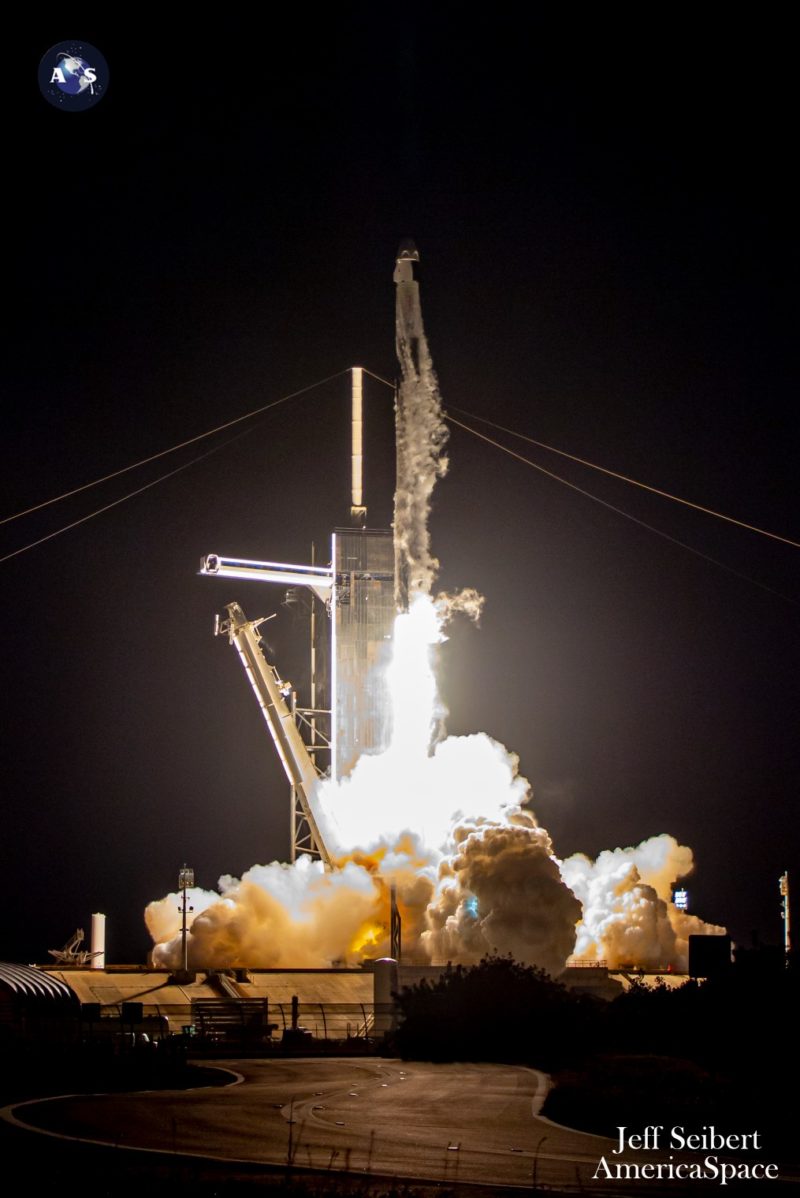
Other payloads included the Hotbird 13G communications satellite, 266 Starlink low-orbiting internet communications satellites and in June the Satria Very High Throughput Satellite (VHTS), built by Thales Alenia Space for Indonesia’s Pasifik Satelit Nusantara (PSN). Her Hotbird 13G launch last November marked the first time that SpaceX achieved 50 Falcon 9 missions in a single calendar and in January, her 56-strong Starlink “stack” tipped the scales at 38,400 pounds (17,400 kilograms) to become the heaviest Falcon 9 payload ever orbited at that time.
Aboard tonight’s mission were a further 23 Starlinks. Their presence pushed to over 1,800 the number of these flat-packed internet communications satellites launched on 56 Falcon 9 missions so far in 2023.
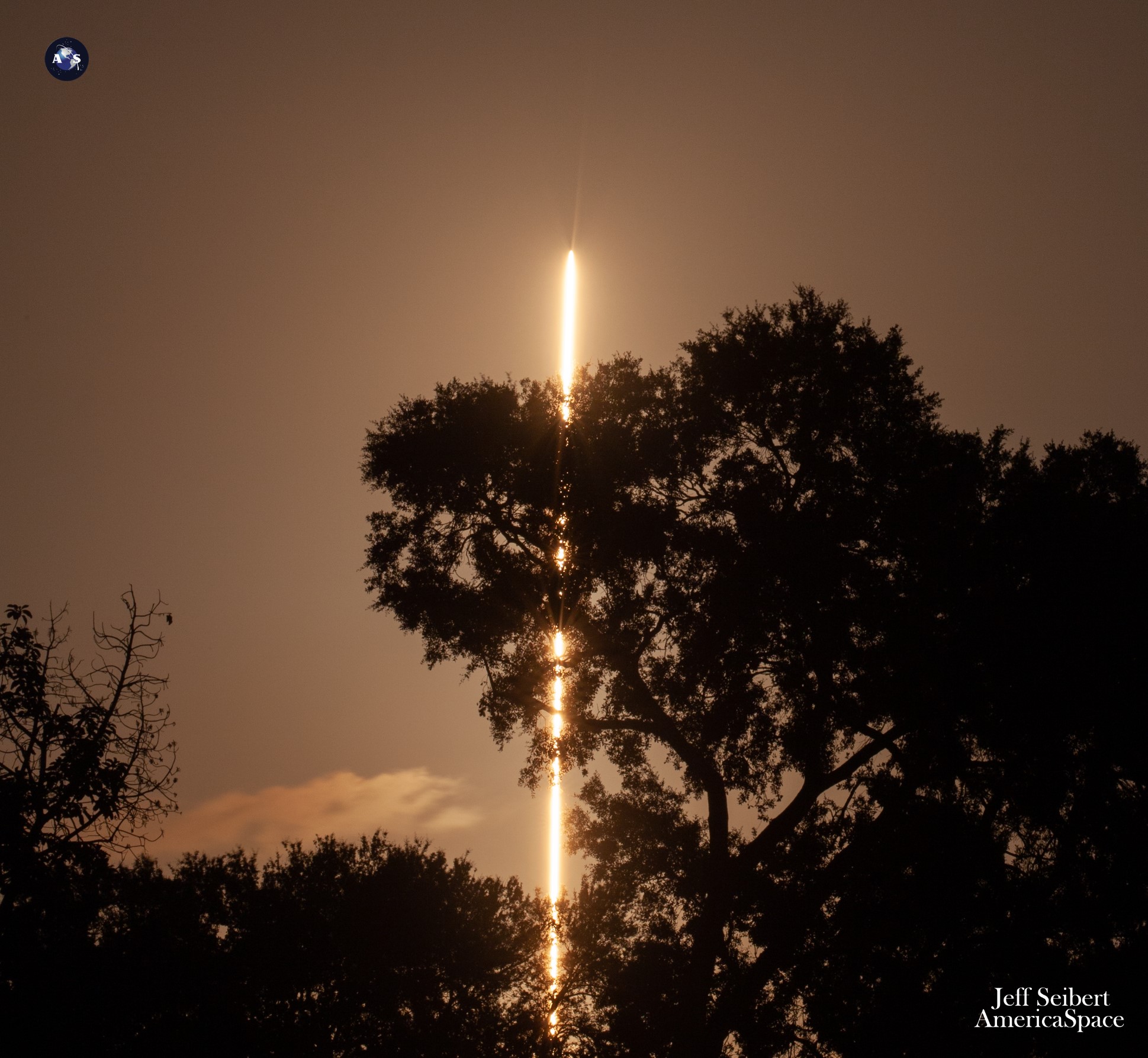
As a network, Starlink facilitates high-speed and low-latency internet provision to over 60 sovereign nations and international markets in North and South America, Europe, Asia, Oceania and Africa. So far in November, Europe’s Georgia, Africa’s Benin and Asia’s Maldives have joined the network.
The downsized Starlink “V2 Mini” satellites, first flown last February, boast three to four times greater “usable” bandwidth than earlier Starlink iterations. “V2 Minis include key technologies—such as more powerful phased-array antennas and the use of E-Band for backhaul—which will allow Starlink to provide 4x more capacity per satellite than earlier iterations,” SpaceX explained. “Among other enhancements, V2 Minis are equipped with new argon Hall thrusters for on-orbit maneuvering.”
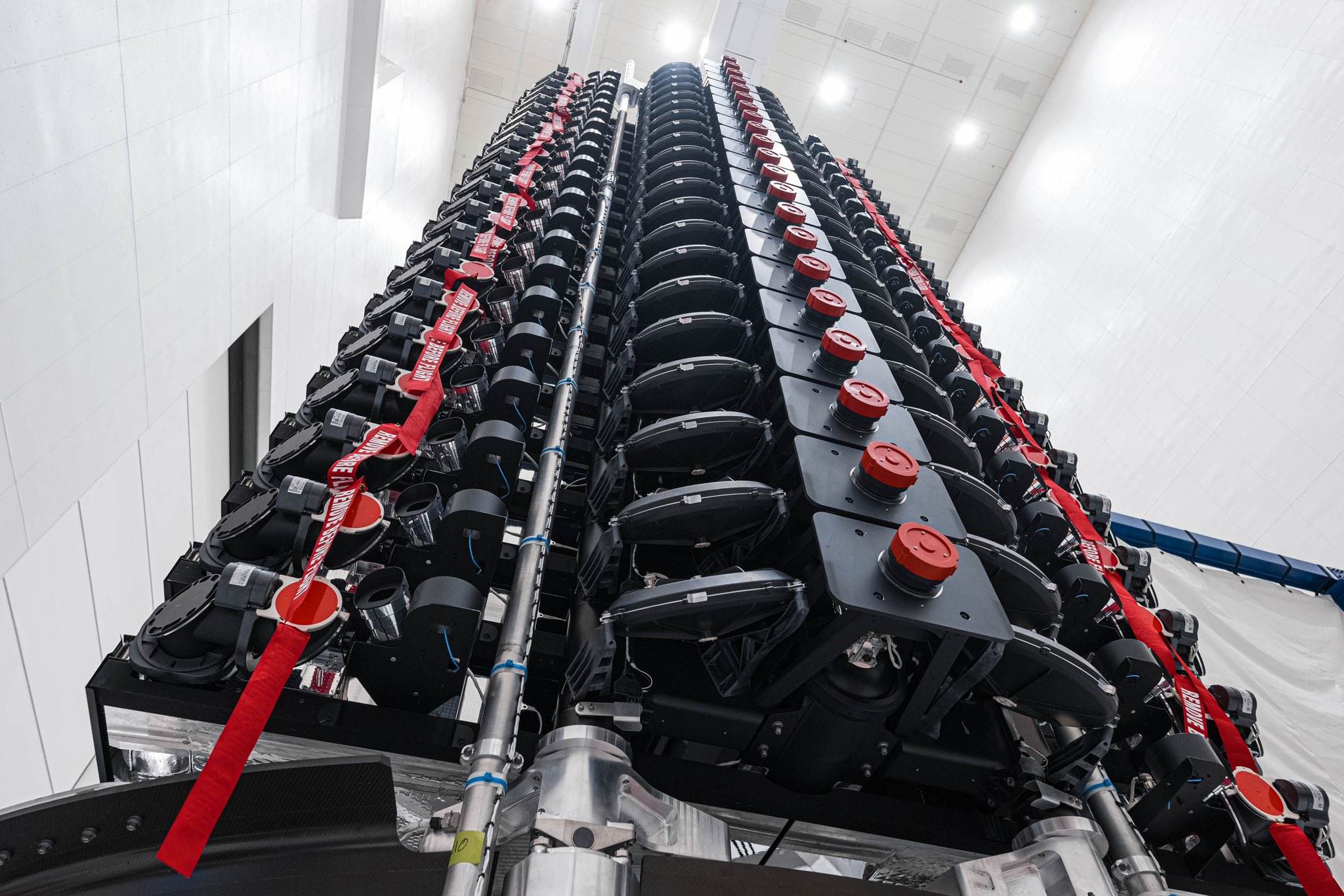
Florida-based intercity operator Brightline adopted Starlink on its trains earlier in 2023, the first passenger rail service in the world to do so. Additionally, El Salvador’s Ministry of Education has begun integrating Starlink capability into its schools to help close the digital divide between urban and remote rural communities and 50 Rwandan schools are now connected via Starlink’s high-speed internet service.
SpaceX teams elected to push later into last night’s raft of T-0 opportunities and B1067 sprang for space atop a column of golden flame at 2:47 a.m. EST, only a few minutes before the closure of the window. Two and a half minutes into flight, with pinpoint precision, she completed a smooth Main Engine Cutoff (MECO) and separated from the stack, pirouetting to a touchdown on ASOG’s deck to achieve the 72nd drone-ship landing of 2023.
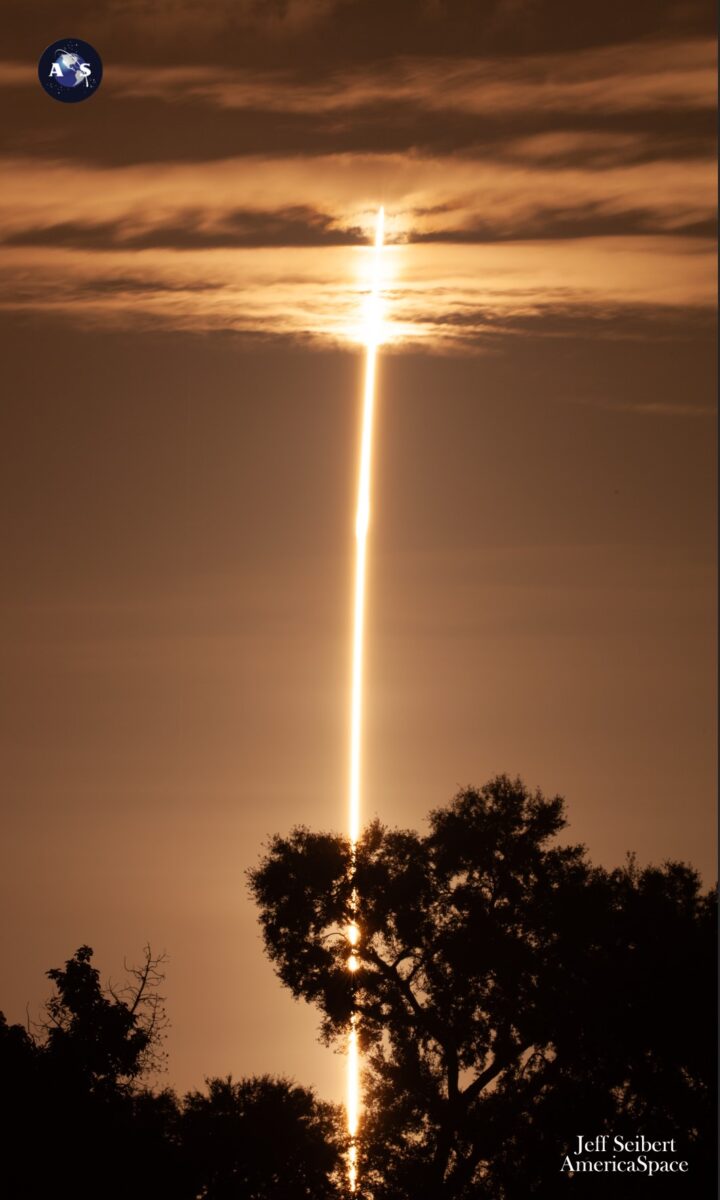
Meanwhile, the Falcon 9’s second stage executed a six-minute “burn” to deliver the 23 Starlinks into orbit. Deployment was expected about 65 minutes after liftoff.
Last night’s launch marked the 86th Falcon-class mission of 2023, a number that includes 82 Falcon 9 flights by 15 “single-stick” boosters and four outings by the triple-barreled Falcon Heavy. Multiple accomplishments included SpaceX’s first eight-launch month in March and first nine-launch month in August, a new record of only four hours and 12 minutes between pairs of flights last spring and an individual booster hitting a record-breaking 18th mission earlier in November.
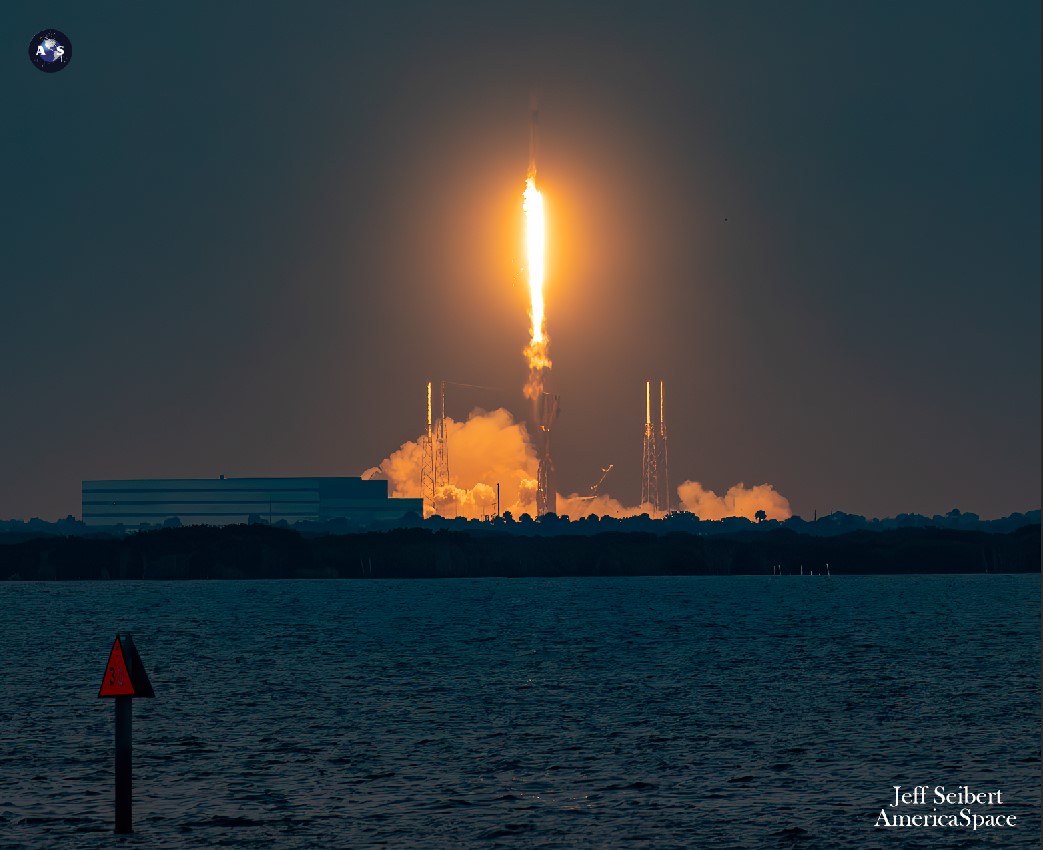
With last night’s launch, SpaceX’s cadence through 2023 currently averages a mission every 3.77 days, a substantial uptick on last year’s previous record-breaking achievement of 61 launches and a flight every 5.9 days. And with the potential for two more Falcon 9 launches in the coming days, November might end as SpaceX’s first ten-mission month and with a similar number of flights in December the year could end with not far shy of a hundred Falcons having flown.






3 Comments
Leave a Reply3 Pings & Trackbacks
Pingback:SpaceX Flies Third Mission in 2024’s First Week, ULA Vulcan-Centaur Up Next - AmericaSpace
Pingback:SpaceX Launches Third Mission in 2024’s First Week, ULA Vulcan-Centaur to Fly Tonight - SPACERFIT
Pingback:Falcon 9 Flies, As SpaceX Heads for 10-Launch Month, 100-Launch Year